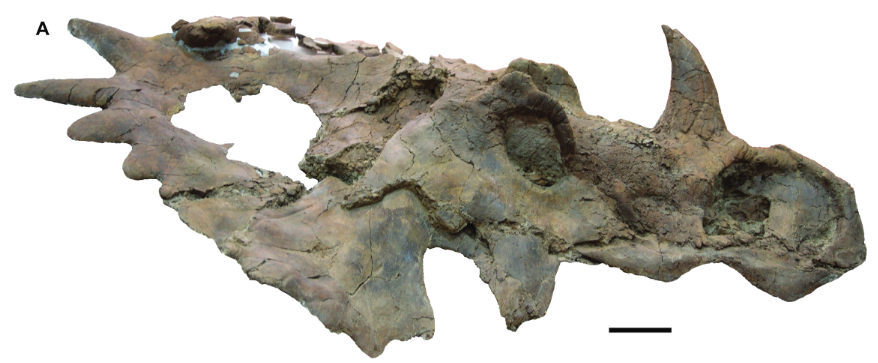Relationship with Centrosaurus also explored.
New research from the Royal Tyrell Museum and the University of Alberta, published in the open source journal Vertebrate Anatomy Morphology Palaeontology, sheds some light on the horn development of ceratopsids.
Styracosaurus is a relatively famous dinosaur, with its prominent central horn and horned frill, but it’s relatively unknown to paleontologists: Most specimens are adults and all of them are found in Alberta and Montana. The particular specimen at the heart of the research is a subadult–a teenager in other words–whose features are distinct enough from other specimens to unearth new knowledge about how the dinosaur developed.
Most interesting is the revelation that Styracosaurus seemed to develop its most prominent features in its final stage of development; that is to say, a juvenile Styracosaurus wouldn’t have all of the most famous features of the species until reaching maturity.
This also helps paleontologists get a better sense of the difference between Centrosaurus and Styracosaurus, two closely related dinosaurs found in the same area relatively close to one another in the fossil record, and the timeline it takes for each to develop: Styracosaurus develops its nasal horncore faster than the Centrosaurus but it never curves forward, the frill develops later on, and the process of its nasal horncore hardening and changing shape doesn’t last as long–leaving it straight up rather than sloping forward.
Fans of horned dinosaurs are now better able to tell two related dinosaurs apart just a little easier than they could before thanks to a once missing link being discovered and identified.
